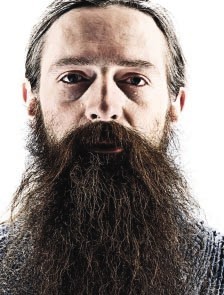
Excerpt from the following: http://www.slate.com/id/2274582/pagenum/all/
The classical areas of regenerative medicine have been moving ahead at an unprecedented pace in recent years. Some of the highlights have, with good reason, been celebrated in the mainstream media: The foremost example is the development by Shinya Yamanaka, and subsequent refinement by numerous groups, of a method to convert adult cells into a state very similar to embryonic stem cells. These cells, termed "induced pluripotent stem cells" or iPS cells, appear to have almost all the versatility of true embryonic stem cells, but can be obtained far more easily, in far greater numbers, and without the main ethical challenges that have confronted the embryonic stem cell field. Stem Cells
Less celebrated, but possibly of similar significance, is an advance in tissue engineering. Following the pioneering work of Doris Taylor, many groups are now pursuing a creative solution to the main problem that has always dogged tissue engineering: vascularization. The blood supply is a vital component of any solid organ, and it has proved hugely difficult to cajole the body to create a competent vasculature in an artificial organ before the cells in that organ have succumbed to deprivation of oxygen or nutrients. Taylor's solution is to "decellularize" an organ from another individual—possibly not even from a human—leaving only the extracellular matrix that defines the vasculature, and then to repopulate this scaffold with suitable cells typically taken from the intended recipient of the organ. This achieves the main goal of tissue engineering, the rejection-free replacement of a damaged organ. Replacing Damaged Organs
Less conspicuous is "molecular regenerative medicine"— repair of the intracellular structure of live cells in situ, or of extracellular structures, as opposed to the wholesale replacement of cells or organs. One of the most impressive advances within this field relates to Alzheimer's disease.The amyloid plaques that accumulate in the brains of Alzheimer's sufferers can be removed by vaccination, a trick that was first demonstrated (in mice) a decade ago. Doubts surfaced thereafter concerning whether this could work in humans, but the approach looks promising at present, with clinical trials having progressed to Phase III. Removal of plaques is unlikely to constitute a complete cure for Alzheimer's disease, but it is almost certain to be part of an eventual combination treatment.Removing Dead and Diseased Cells
At an earlier stage, but still immensely exciting, is the corresponding treatment for "molecular garbage" that accumulates not between cells but inside them. This is a more challenging aspect of aging, because the material in question is resistant to breakdown by any human enzymes. The solution being pursued by the SENS Foundation, the charity of which I am the chief science officer (SENS stands for Strategies for Engineered Negligible Senescence), is to identify non-human enzymes that can do the job and introduce them into our cells. The biggest initial challenge is to identify such enzymes, but we have now done that with respect to the main types of garbage responsible for cardiovascular disease and macular degeneration. This has already led to several peer-reviewed academic publications, and we hope to bring it to the stage of testing in mice within the near future. Eliminating Molecular Garbage
Additional targets being pursued by SENS Foundation include the elimination of cells that refuse to die when the body wants them to—a major aspect of the decline of the immune system with age, among other things—and the prevention of mitochondrial mutations by putting modified copies of the mitochondrial DNA into the nucleus. These projects are moving forward with impressive speed, though slowed by resource limitations.
When all these components are combined, will we have bona fide rejuvenation biotech? We won't know that for certain until we complete the development of all those components, at least in mice. But every type of "aging damage" of which we're aware—and for which SENS Foundation and others are developing interventions—has been known about for well over a quarter of a century. If some other factor is at work in aging, then biologists should have identified it by now. It looks as though all that stands between us and control of aging is hard work. Let's up the pace.

good resources of knowledge on reverse ageing ,
ReplyDeletethanks for giving your valuable ideas